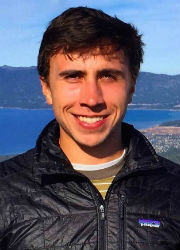Leading on Climate
Maximilian Salvador Stiefel
CNI Fellow - Class of 2015
Graduate Student, Geography
UC Santa Barbara
Project
Best Practices for Carbon Neutrality at the University of California, Santa Barbara
Description
Sustainability stakeholders at UC Santa Barbara recruited two Carbon Neutrality Initiative (CNI) fellows during spring 2015 to research best practices for achieving campus carbon neutrality by 2025. Best practices entail innovative technology, policy and design. Fellows were tasked with composing a comprehensive list of best practice options for UC Santa Barbara. From this list the fellows selected key projects towards which they completed further research. This included expert interviews, literature review and localized implementation analysis to determine the benefits, costs, risks, timeframe and feasibility of best practices.
Goals
Best practice recommendations towards carbon neutrality by 2025 require a careful understanding of the practice, the local receptivity and physical situation, and the funding mechanisms through which implementation becomes possible. Ideally, best practices reduce the institutional carbon footprint through fewer greenhouse gases and also engender a prominent culture of sustainability. Each of the practices outlined above aim towards the former goal while attainment of the latter is more easily done through policy and behavior change. Even so, practices that typically omit sustainability culture propagation can be augmented. An example includes the Stanford Central Energy Facility, which serves as a living laboratory and an exposition for the community to learn about innovative energy systems. Creating platforms through which practices achieve both goals plays a crucial component in this research.
Future Plans
The CNI fellows plan for further research and analysis on the in-depth topics during this quarter. Beyond the scope of this quarter, I suggest more advanced localized implementation analysis and applied research to improve best practices, as is the case with a recent grant for improving upon compressed air energy storage. Further research with on- and off-campus collaborators could be of great importance in determining best practice potential and feasibility.
Mentor
Katie Maynard

